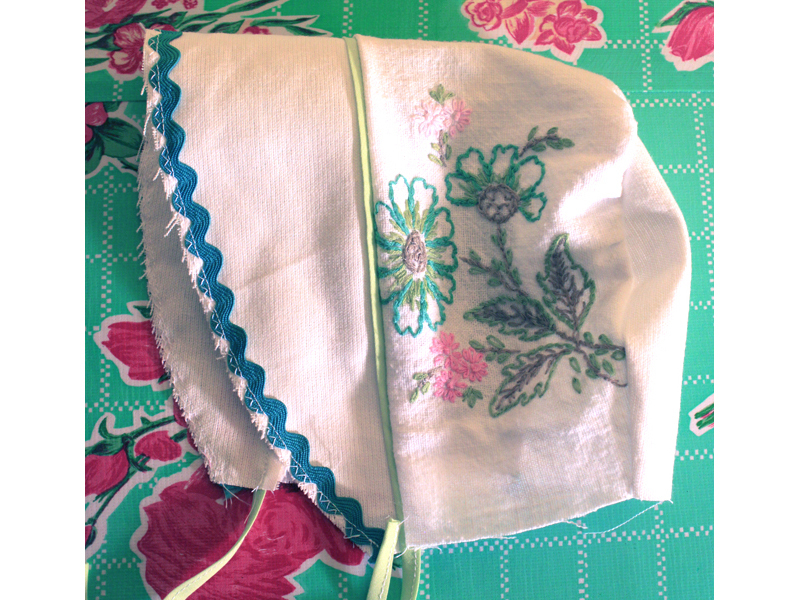A bonnet is a small, sweet gift for a new baby. Making one is fairly simple, and you can apply all sorts of personal twists to a basic bonnet pattern. I am fond of visiting vintage and thrift stores to search for treasures, and I tend to find myself leaving with an assortment of fabrics and linens. Vintage hankies, hand towels, pillowcases, and napkins are often adorned with hand embroidery – a detail that I love. I began collecting vintage linens before it occurred to me that if properly cut and assembled, these hand-adorned gems could be turned into perfect baby gifts.
Every bonnet I have made using vintage linens varies greatly. You will not find hand-stitched linens in a standard size or shape, so I recommend really looking at the piece you choose to use and deciding exactly where you want the embroidered embellishments to fall on the hat. Occasionally I come across pieces that are edged in hand-crocheted lace, which I try to incorporate into the portion of the bonnet that shades the face. I have other napkins that have something sewn into the center – with these it might be nice to place the stitching on the back of the hat. The fun part of this project is how you choose to use the embellishments.
Before beginning, wash all the fabrics you will be using. Be careful with the vintage embroidery: wash it on delicate and cold to avoid bleeding the color from the thread.
In this tutorial, I will show you how to make two variations on this simple bonnet pattern – one with a flat bill and one with a ruffled bill.
Project Steps
For both bonnets:

Download the bonnet pattern, print it, and cut out the separate pieces. Tape together the two crown pieces labeled “Pattern Piece 2” where indicated.
Select a vintage linen with embroidery embellishments and iron it flat using the appropriate heat setting.
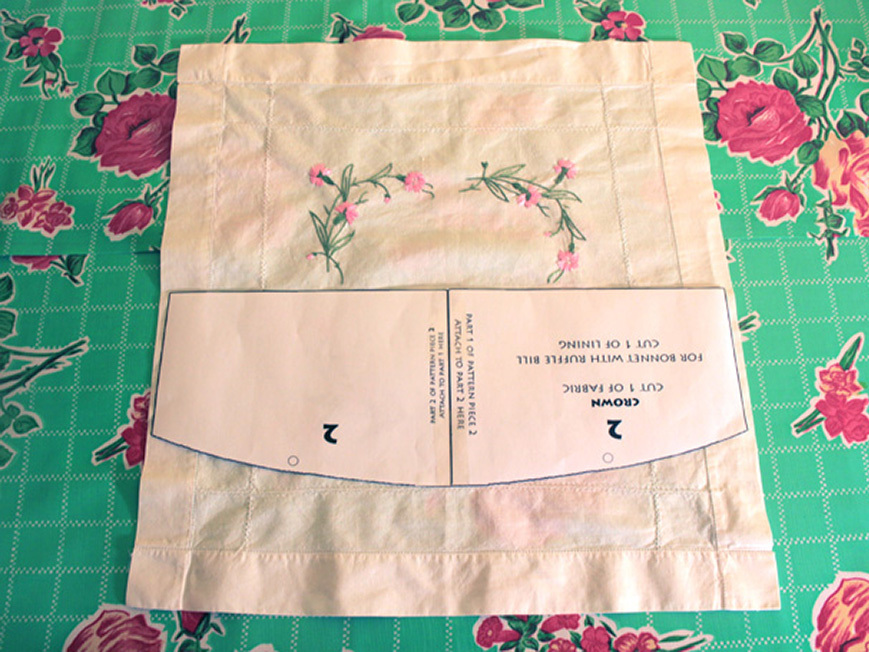
Play with the pattern pieces to determine how to best use the existing embroidery. Once you have settled on a design, pin the pattern pieces down and carefully cut them out.
Pin and cut out your pattern pieces for the lining from a contrasting fabric.
Using a pencil, mark the dots indicated on the pattern pieces onto both the lining and vintage fabrics.
Using the machine, baste stitch between the dots marked on the lining and fabric for Pattern Piece 2 (if making the bonnet with the flat bill, do this with Pattern Piece 4 as well). Pull the thread to slightly gather the basted stitches.
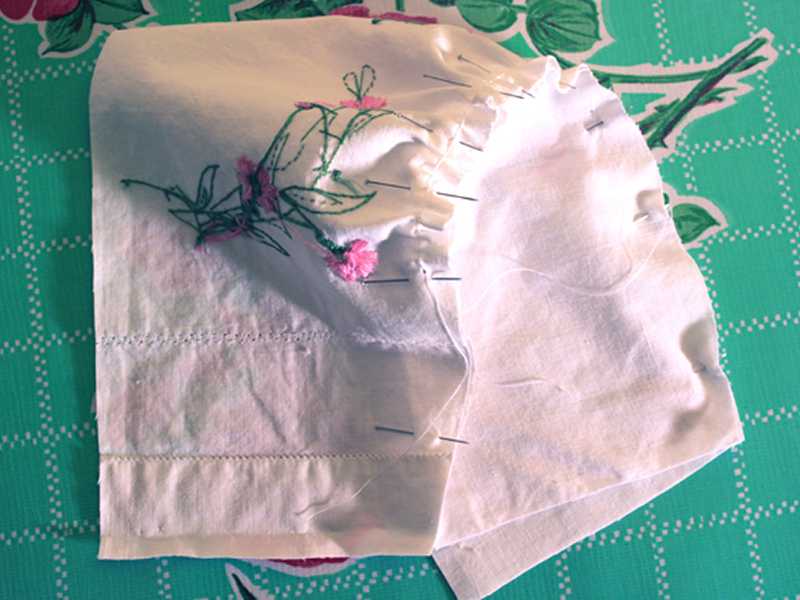
Pin together the right sides of Pattern Pieces 1 and 2, using the gathered fabric of 2 to ease around the curved edge of 1.
Using the sewing machine, stitch pieces 1 and 2 together. Repeat this using the lining fabric.
For a bonnet with a flat bill:
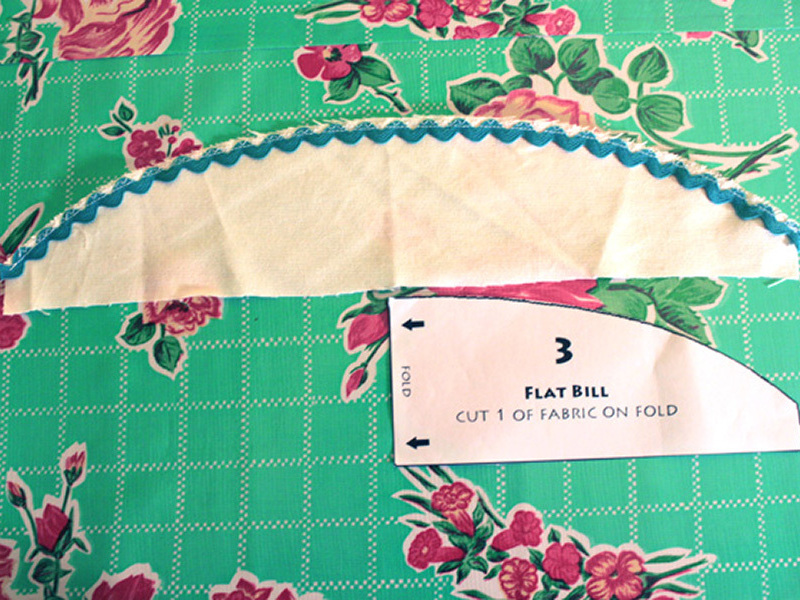
Optional: Stitch rickrack or lace along the curved edge of Pattern Piece 3. Because the fabric I was using frays easily, I also zig-zag stitched along the edge.
Step 10: Cut a 40″ piece of 1/4″ bias tape. Top stitch the open edge of the tape closed.
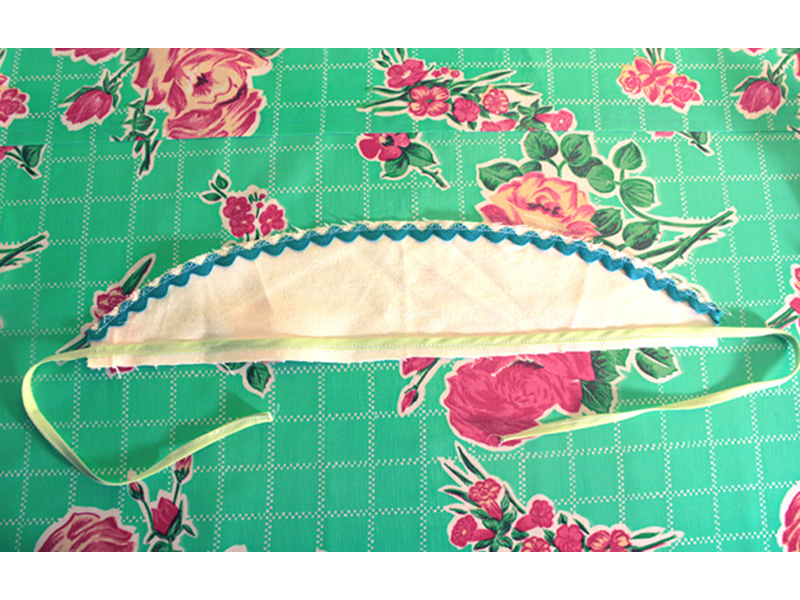
Pin the bias tape 1/4″ in from the straight edge of Pattern Piece 3, distributing the extra length evenly on either side (these will be the ties for the bonnet).
Stitch the bias tape in place leaving 1/2″ unsecured on each end (this will allow for a finishing seam).
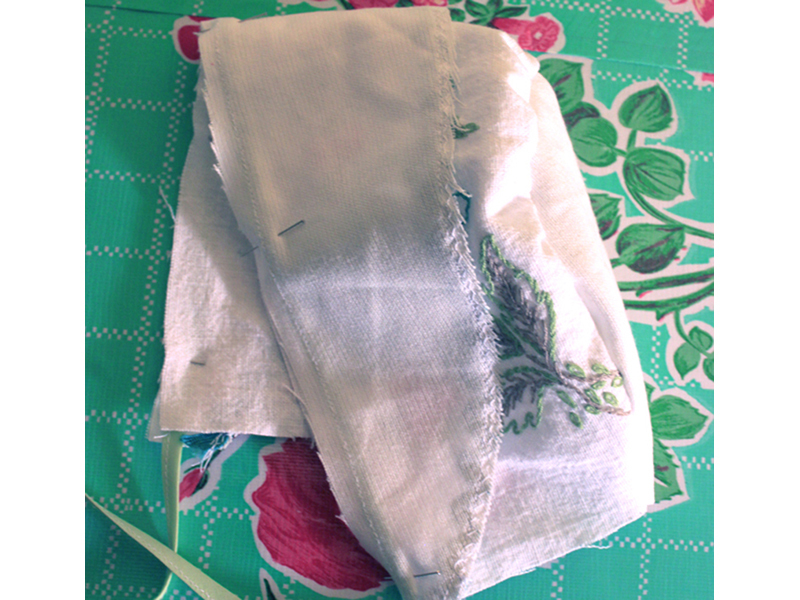
Pin the right side of the bill (Pattern Piece 3) to the right side of the crown (Pattern Piece 2). Stitch in place. Unfold and iron flat.

Pin the right side of the bonnet to the lining, being careful to tuck the bias tape ties inside. Leave the back of the bonnet unpinned (this will be the opening for turning the hat right-side-out). Sew in place using a 1/4″ seam allowance.
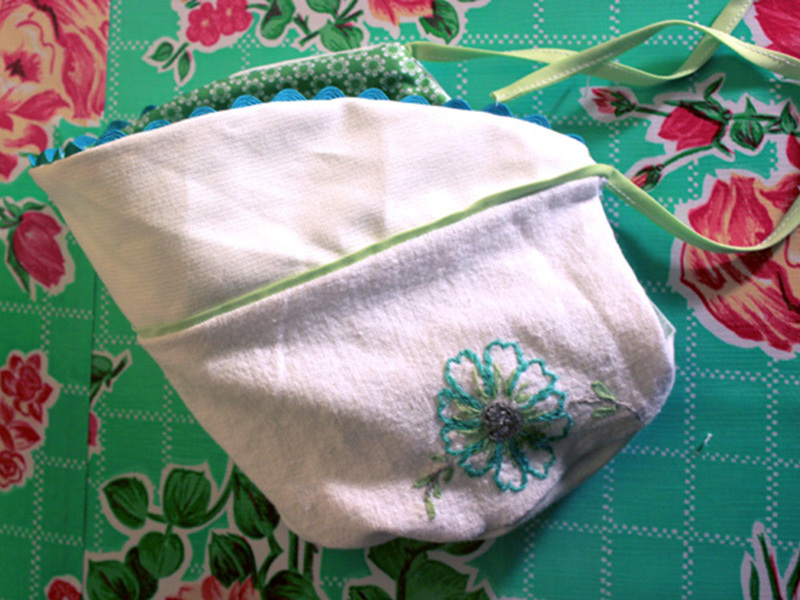
Turn the bonnet right-side-out by pulling the fabric through the opening left in the back of the bonnet. Iron seams flat.
For a bonnet with a ruffled bill:
Cut a 40″ piece of 1/4″ bias tape. Top stitch the open edge of the tape closed.
Pin the bias tape 1/4″ in from the straight edge of Pattern Piece 2, distributing the extra length evenly on either side (these will be the ties for the bonnet).
Stitch the bias tape in place leaving 1/2″ unsecured on each end (this will allow for a finishing seam).

Cut a strip of fabric for the ruffled bill that is 5″ x 40″ (I used my lining fabric for this, but fabric the same color as the cap of the bonnet looks great as well).
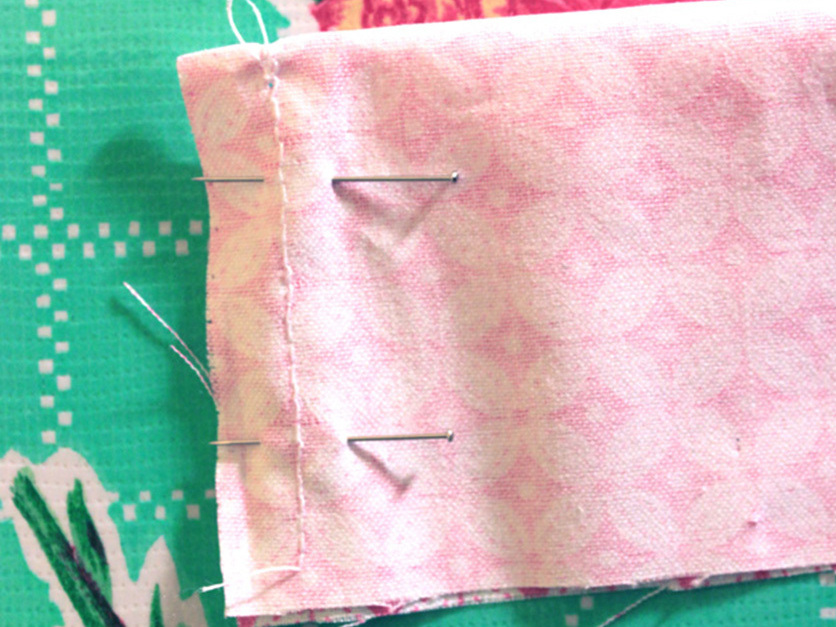
Fold together the right sides of the ruffle and stitch the short ends closed (you will now have a strip that is 2 1/2″ x 40″).
Turn the ruffle strip right-side-out and iron the folded edge in place. Baste stitch along the open edge.
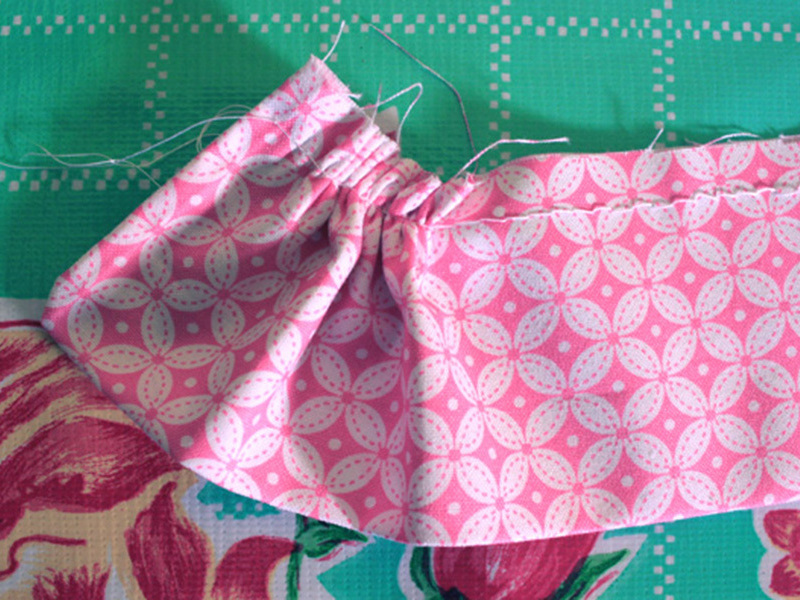
Pull on the threads of the baste stitching to gather the ruffle.
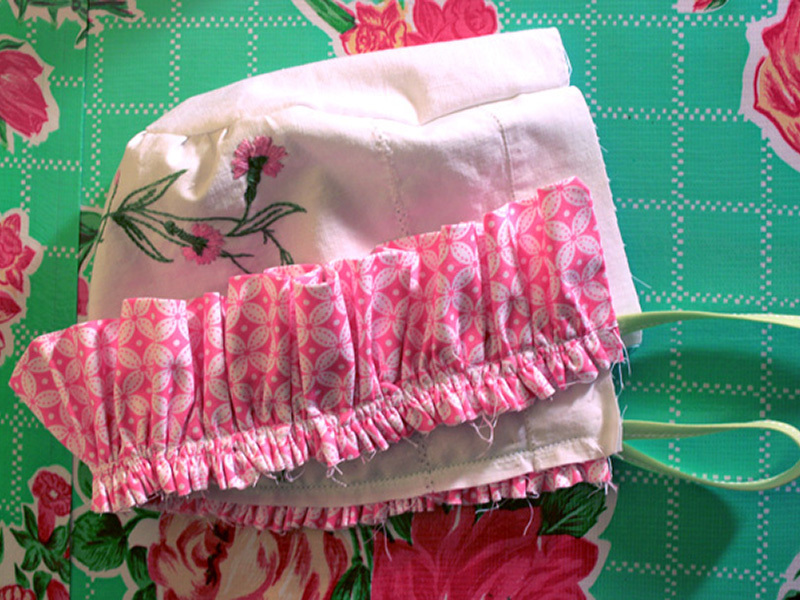
Pin the gathered edge of the ruffle to the right side of the crown (Pattern Piece 2), evenly distributing the gathers. Stitch in place.
Pin the right side of the bonnet to the lining, being careful to tuck the bias tape ties inside. Leave the back of the bonnet unpinned (this will be the opening for turning the hat right-side-out). Sew in place using a 1/4″ seam allowance.
Turn the bonnet right-side-out by pulling the fabric through the opening left in the back of the bonnet. Iron seams flat.
To finish both bonnets:
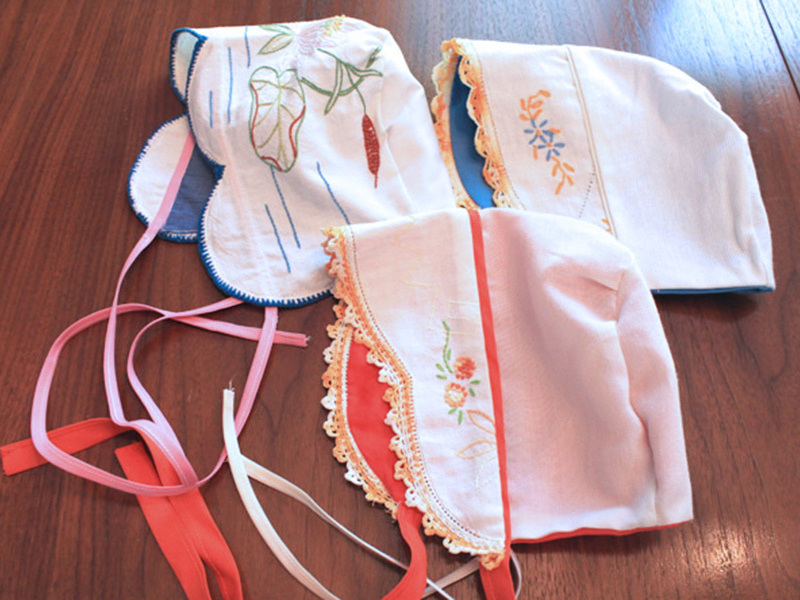
Use a needle and thread to blind stitch the open back of the bonnet closed.



